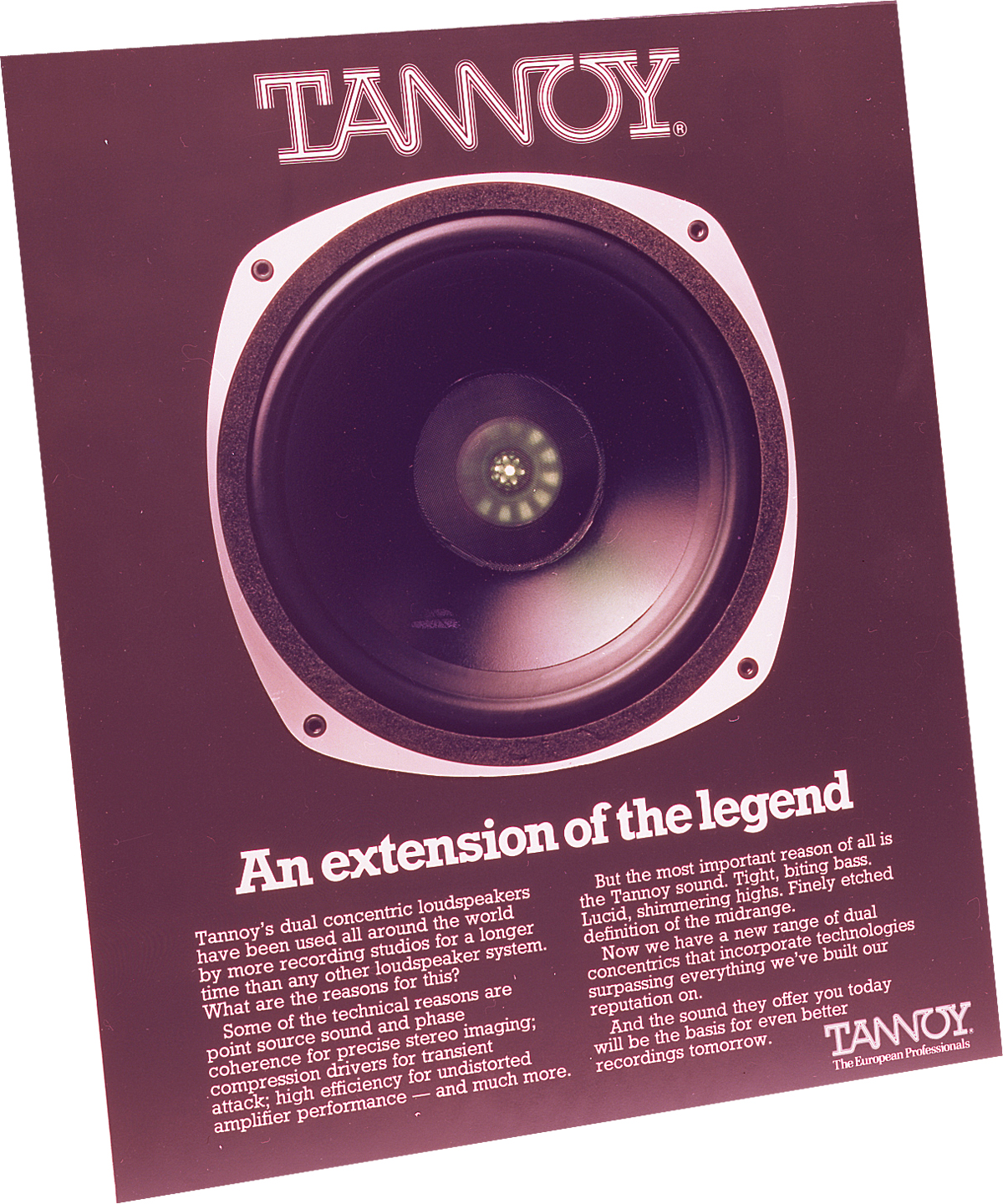

The sum of all these parts is a passive, 2‑way monitor weighing in at 7.5kg and measuring just 220 x 360 x 267mm. Chamfered corners are used to reduce cabinet edge diffraction, and the twin reflex ports are filled with acoustic foam to fine‑tune the cabinet damping. As well as looking distinctive, the cabinet shape also makes it very rigid, which helps counteract excessive cabinet vibrations. The vinyl‑coated MDF cabinet design is visually attractive and very solidly engineered - as you'd expect from Tannoy's highly advanced cabinet manufacturing plant. The shape of the LF cone profile continues the horn flare of the tweeter, and trim rings are used at the outer edge of the drive unit to help create a smooth transition from the horn flare to the flat baffle.
TANNOY DUAL CONCENTRIC STUDIO MONITORS DRIVERS
Apparently, a low‑order crossover is used to ensure a smooth transition between the low LF and HF ranges, and because the drivers behave as a point source, the problems normally associated with overlapping frequency bands are much reduced. A low compression ratio ensures minimal distortion from air compression effects, and the crossover frequency is at 1.8kHz. The tweeter voice coil is copper, chemically bonded to a Kapton former, and ferrofluid is used in the magnetic gap to aid cooling. This is suspended in an inert, nitrile‑rubber mounting with a very narrow roll surround to reduce resonance effects to a bare minimum. The HF diaphragm is fabricated from aluminium and magnesium alloy to give it sufficient rigidity to work as a true piston to 25kHz. Judged as nearfield monitors, the System 600s present a good overall balance of sounds, with the proviso that there's no really deep bass. The 'tulip' waveguide can be clearly seen at the centre, and the injection‑moulded polypropylene cone is suspended in a high‑compliance, nitrile‑rubber surround. The System 600s utilise a 6.5‑inch driver, which is small enough to enable the woofer and tweeter elements to match up smoothly. What's more, horn‑loaded loudspeakers can suffer from phase problems caused by reflections and air non‑linearities occurring inside the throat, resulting in a rather harsh edge to the sound, though even these can be minimised by careful design. Inevitably, every engineering approach has its disadvantages as well as its benefits, and in the case of dual‑concentric speakers, the larger you make the speaker, the harder it is to make the woofer and tweeter frequency responses meet smoothly - and there's nowhere to put a mid‑range driver. Furthermore, horn loudspeakers are more efficient than direct radiators, so a horn tweeter is able to produce more acoustic energy for the same input power. For nearfield use, this also means that the speakers can be used on their sides without compromising their performance. Obviously, Tannoy haven't stuck with the dual‑concentric principle out of blind intransigence: there are a number of well‑documented benefits to this approach, the most important of which is that the speaker behaves as a point source of sound, ensuring that the high‑ and low‑frequency components of the sound always arrive with the correct relative phase to each other, regardless of whether the listener is on or off axis. As with all the latest generation of Tannoy dual‑concentric speakers, the tweeter incorporates an acoustic waveguide between the pressure transducer and the outside world, to force the tweeter into generating a spherical wavefront - the idea being to better control the directivity of the tweeter. To improve the efficiency of the horn design, the bass/mid cone acts as an extension to the tweeter's own short horn. For those unfamiliar with dual‑concentric loudspeakers, the design is characterised by a horn‑loaded tweeter mounted at the centre of the bass/mid driver.

While virtually every other loudspeaker manufacturer on the planet has settled for physically separate woofers, tweeters, and occasionally mid‑range drivers, Tannoy have exhibited considerable tenacity in adhering to their original dual‑concentric concept. Tannoy's latest nearfields offer an updated version of their famous dual‑concentric technology, while still retaining that distinctive Tannoy sound.


 0 kommentar(er)
0 kommentar(er)
